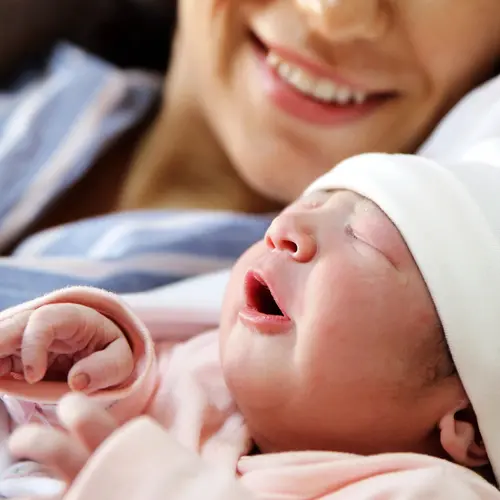Horseshoe kidney, also called renal fusion, is a condition that starts before a child is born.
As a baby develops in the womb, their kidneys move into position just above the waist -- one on each side of the body. But sometimes that doesn’t happen as it should. Instead, the kidneys fuse together at their base, forming a U or horseshoe shape. It usually happens between weeks 7 and 9 of the pregnancy.
The condition isn’t common -- about 1 in 500 babies have it, boys more often than girls. And many kids won’t have serious health issues because of it.
However, about one in three children with fused kidneys will also have a problem with their heart, blood vessels, nervous system, reproductive or urinary systems, digestive system, or bones. There’s no cure for renal fusion, but your child’s doctor can help them manage those conditions.
Symptoms of Horseshoe Kidney
About a third of the time, the condition causes no symptoms at all. But many kids will have some issues. The most common problems are:
- Urinary tract infections (UTI), which can cause:
- Kidney stones, which can cause:
- Hydronephrosis, when something blocks the urinary tract and a buildup of urine makes the kidneys swell. Symptoms include:
- A mass in the belly
- Not gaining enough weight
- Peeing less often
- UTIs
Children with horseshoe kidney can also go on to have other health problems, such as:
- Wilms tumor, a kidney tumor that can happen in young kids
- Polycystic kidney disease, which causes noncancerous cysts
- Kidney cancer
- Hydrocephaly, or fluid on the brain
- Spina bifida, when part of the spinal cord forms incorrectly
What Causes Horseshoe Kidney?
No one knows for sure. Experts think it may happen when there’s a problem with a child’s genes.
The condition can happen when a child has certain genetic disorders, especially:
- Turner syndrome, a condition in girls that causes shorter-than-normal height and ovarian problems.
Edwards syndrome, also called Trisomy 18. It causes slow growth in the womb, low birth weight, and several serious medical problems.
Down syndrome, also called Trisomy 21. An extra chromosome causes cognitive impairment and developmental delays, along with medical problems.
Trisomy 13 (Patau syndrome) is another genetic disorder that can cause a cleft lip or palate, decreased muscle tone, and severe cognitive impairment.
Diagnosis and Treatment
Doctors usually don’t diagnose horseshoe kidney before birth. Since its symptoms are similar to those of other health problems, it’s important to see your child’s doctor to make sure you get the correct diagnosis.
The doctor will ask about your child’s symptoms and health history, and they’ll do a physical exam. They may also suggest other tests, such as:
- Blood tests to see how well the kidneys are working
- Urine tests, which check for signs of infection
- Kidney ultrasound, a test that uses sound waves to make a picture of the organ. It can help the doctor see any kidney stones, cysts, or tumors.
- Intravenous pyelogram (IVP) or voiding cystourethrogram (VCUG), special X-rays that show how urine flows inside the body
- Radionuclide scan, an imaging technique that uses a small dose of a radioactive substance to detect any problems.
- Imaging tests such as an MRI or CT scan.
There’s no cure for horseshoe kidney. Once the kidneys fuse in a horseshoe shape, they stay that way. But you can treat some of the problems the condition can cause. For instance, your child may take antibiotics for an infection or have surgery for kidney stones.
If your child has no symptoms, they may not need any treatment.
What Else Should I Know?
With renal fusion, the kidneys may be lower and closer to the front of the body than they should be. That raises the chance of a kidney injury, especially from activities like contact sports. Talk to your child’s doctor about what activities are off the table, and get tips for safe play.
It’s also a good idea for your child to wear a medical alert bracelet. That can help others know about your child’s condition and how to treat them in case of an emergency.

